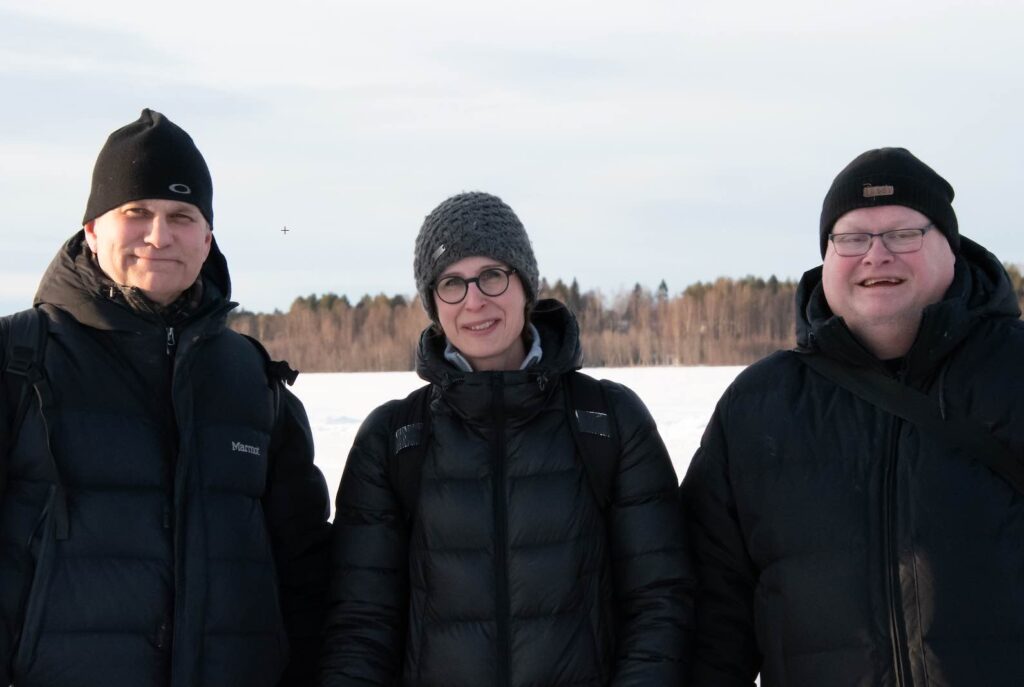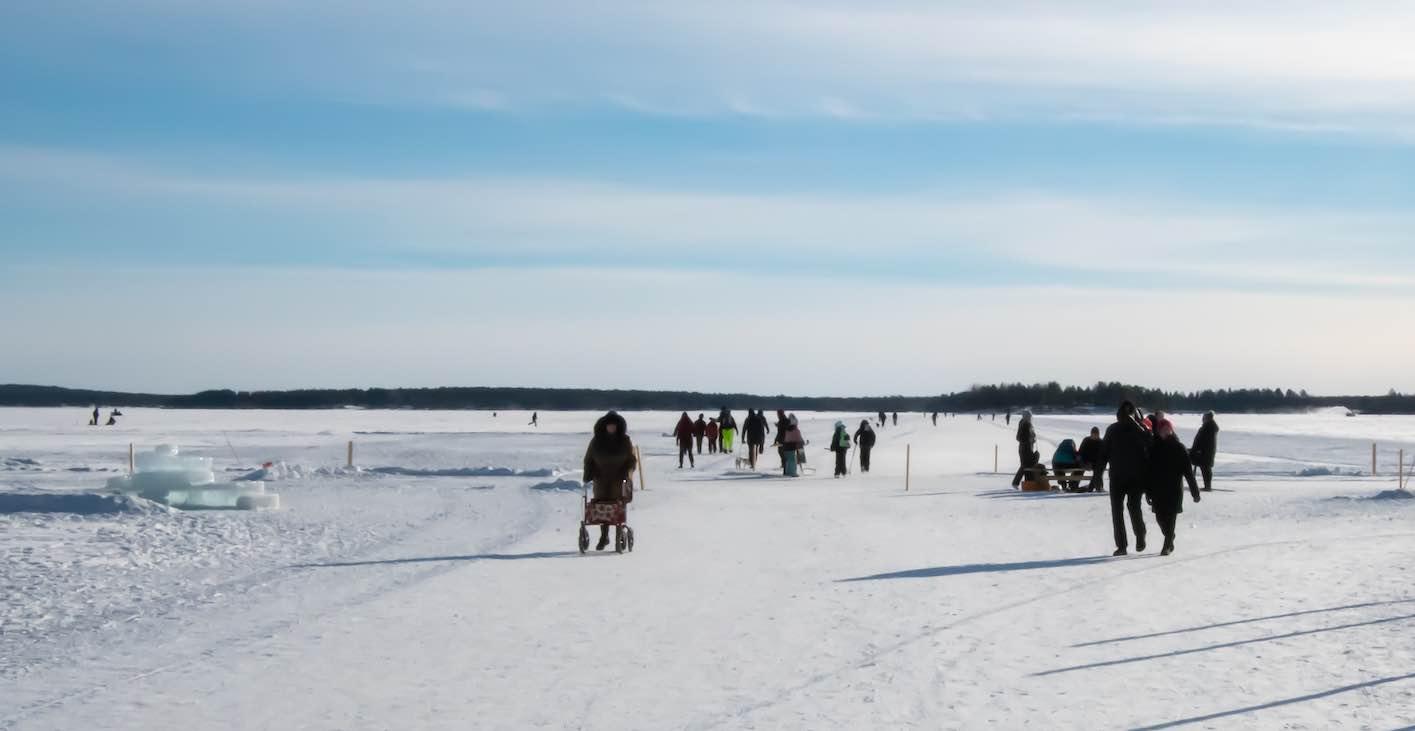Testing IoT in an Arctic climate
The sun is shining, the snow is sparkling and the ice track is glistening and freshly ploughed. Many people have taken to the ice today. Some to barbecue, others to take a walk or to take a ride on one of the city’s connected loaner kicksleds. IoT Sweden visited the Arctic IoT project in Luleå.
There is a gathering down on the ice track at Södra hamnplan. Luleå Municipality is the project owner of Arctic IoT, a prototype development project funded by IoT Sweden. On this day, project manager Urban Persson has gathered all the parties involved in the project. They will meet with Business Sweden and IoT Sweden to discuss development and internationalisation together.
“Arctic IoT is a collaborative project between the public sector, academia and industry. Several of Luleå’s top tech companies are involved in the project, and for them it is, of course, interesting to look beyond Sweden’s borders,” says Urban Persson, Business Architect at the Digital Development Unit at Innovation & Development Luleå Municipality.
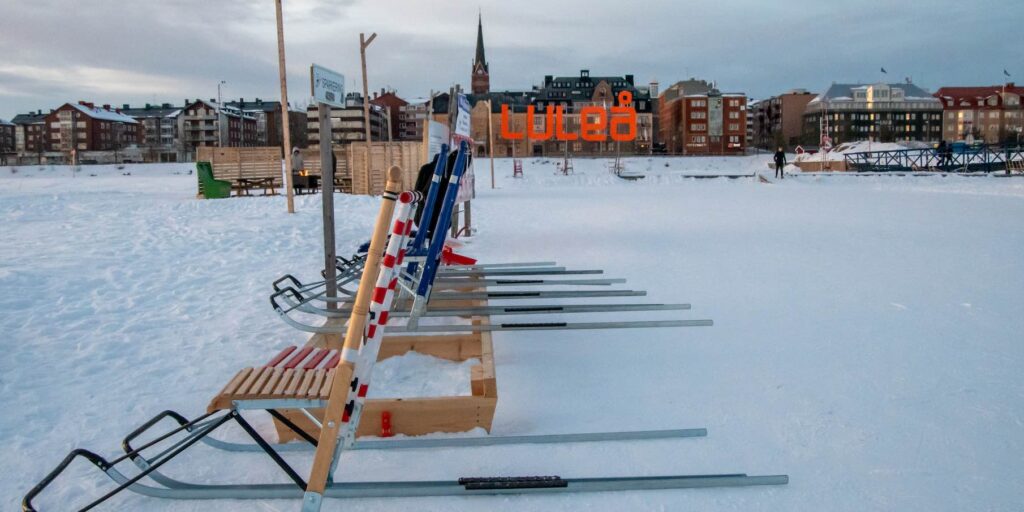
Connected and popular ice track
The ice track has become a popular visitor and recreational area. On nice days, it is full of people who come here to skate, ride kicksleds, take walks and barbecue at one of the municipality’s fire pits.
“The ice track means a lot to the people of Luleå, and actually served as inspiration for this project. We started thinking about how we can use digital means to develop it and make it even more accessible,” says Michael Nilsson, Project Manager at the Department of Computer Science, Electrical and Space Engineering at Luleå University of Technology.
The thoughts resulted in the prototype development project Arctic IoT. The goal is to develop an app where visitors will be able to see various information before, during and after their visit to the ice track.
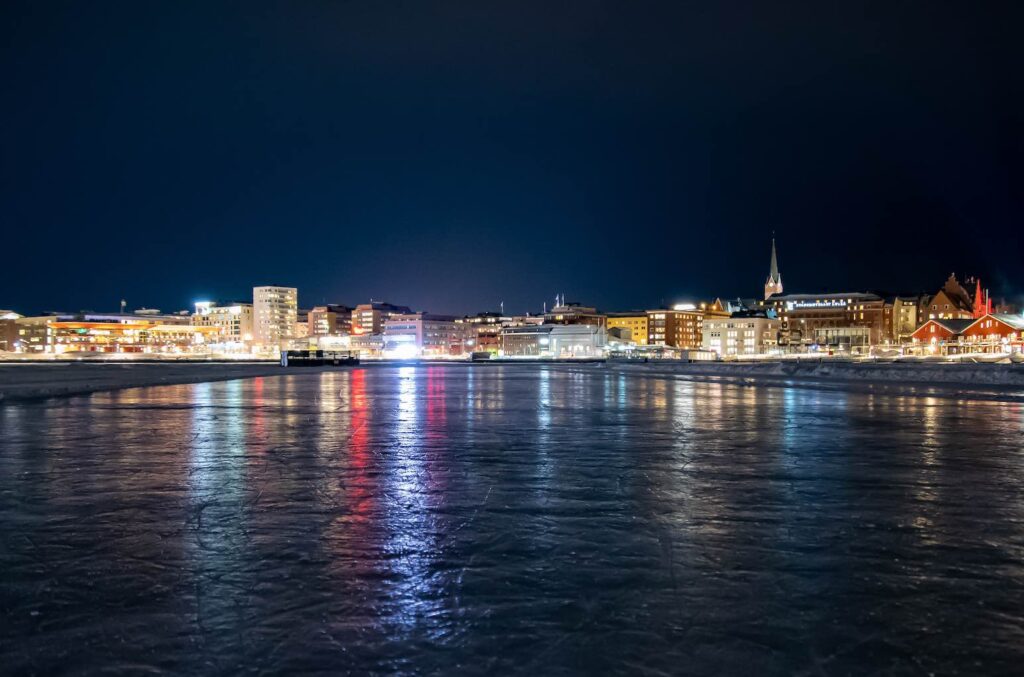
Testing several different solutions
The project is currently in an intensive phase, where different sensor solutions are being tested in the Arctic climate. Two weather stations have been set up to measure humidity, wind speed and how cold it is. Other types of sensors are located at the municipality’s fire pits, one measuring heat and another measuring how much wood is left in the wood boxes. There are also sensors that measure the water temperature in an ice hole for winter swimmers. In the adjacent sauna, there are heat sensors that signal whether it is heated or not.
A particularly popular initiative is the municipality’s kicksleds along the ice track, which can be borrowed free of charge and are now also connected.
“We’ve equipped the kicksleds with sensors, and our prototype app provides real-time information on whether a kicksled is free or in use and where it is located on the ice track,” explains Urban Persson.
The visualisation is done using the municipality’s own map tool as a basis. On the map, all facilities are labelled with GPS positions.
Problems with weather changes
The unique aspect of the project is the testing of sensor solutions in an Arctic climate. How does the technology cope with snow and cold? So far, the project team can conclude that the cold itself has not created significant problems, although it is a little early to know how aspects such as battery life are affected. However, rapid weather changes, from zero degrees and rain to below zero and wind, have affected the technology.
“Ice and snow formation has on a few occasions created problems for our weather stations, for example, and the sensors that count the number of visitors have also been affected,” says Urban Persson.

Finding new approaches with IoT
The project also has a more general goal – to learn more about the technology, and find new approaches and areas of use for IoT. Luleå Municipality has previously tested IoT solutions in park management and for lifebuoys. This project creates further insights and more integrated solutions that can be used in other areas in the future.
“For example, we’ve talked about applying IoT solutions to measure snow depth or snow weight on roofs. Even using IoT in different ways in welfare, for example through security-creating technology in elderly care,” says Hanna Westergaard, Head of the Digital Development Unit at Innovation and Development, Luleå Municipality.
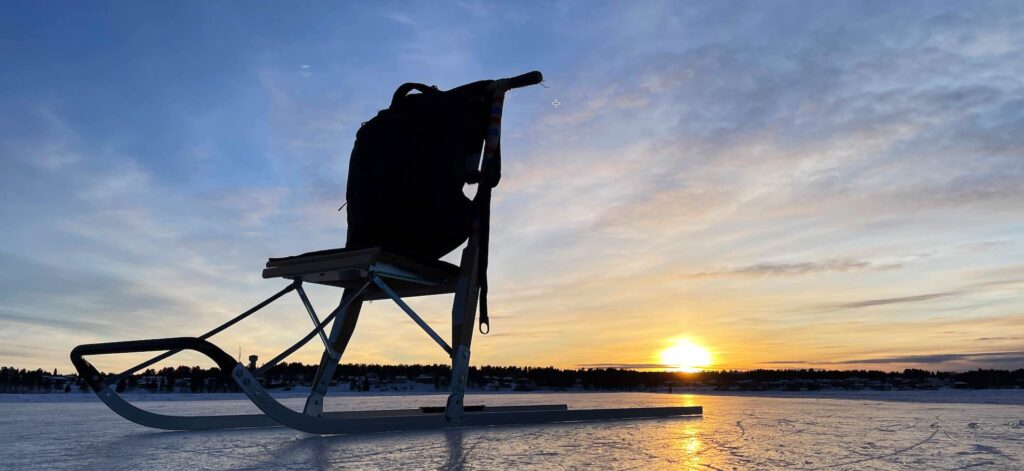
Scaling up – a make-or-break issue
When the project ends, a plan is needed to take the insights further. Scaling up is a make-or-break issue for many innovation projects. It is also something that the Arctic IoT project has already started talking about.
“It is about taking insights from the project further. Finding strategies for sharing and synchronising data. Only then will the municipality be able to benefit from the technology in a meaningful way,” says Hanna Westergaard.
Collected expertise
In addition to Luleå Municipality, the project includes, Luleå University of Technology, the companies Grepit and ThingWave, and the municipal company Lunet. All parties contribute with different skills sets and inputs, which is a strength of the project. The project team sees great opportunities to build on the lessons learned.
“The next step may be to also connect AI (Artificial Intelligence) for even smarter solutions now that we have started collecting data,” says Michael Nilsson.
“Why not open up Luleå as a test bed for other external actors who want to test IoT solutions in a tough climate and in our environments,” Hanna Westergaard speculates further.
The project runs until October 2023.
